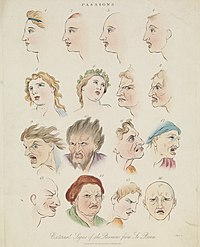
Photo from wikipedia
Abstract Background Disruptions in neural circuits underlying emotion regulation (ER) may be a mechanism linking child maltreatment with psychopathology. We examined the associations of maltreatment with neural responses during passive… Click to show full abstract
Abstract Background Disruptions in neural circuits underlying emotion regulation (ER) may be a mechanism linking child maltreatment with psychopathology. We examined the associations of maltreatment with neural responses during passive viewing of negative emotional stimuli and attempts to modulate emotional responses. We investigated whether the influence of maltreatment on neural activation during ER differed across development and whether alterations in brain function mediated the association between maltreatment and a latent general psychopathology (‘p’) factor. Methods Youth aged 8–16 years with (n = 79) and without (n = 72) exposure to maltreatment completed an ER task assessing neural responses during passive viewing of negative and neutral images and effortful attempts to regulate emotional responses to negative stimuli. P-factor scores were defined by a bi-factor model encompassing internalizing and externalizing psychopathology. Results Maltreated youth had greater activation in left amygdala and salience processing regions and reduced activation in multiple regions involved in cognitive control (bilateral superior frontal gyrus, middle frontal gyrus, and dorsal anterior cingulate cortex) when viewing negative v. neutral images than youth without maltreatment exposure. Reduced neural recruitment in cognitive control regions mediated the association of maltreatment with p-factor in whole-brain analysis. Maltreated youth exhibited increasing recruitment with age in ventrolateral prefrontal cortex during reappraisal while control participants exhibited decreasing recruitment with age. Findings were similar after adjusting for co-occurring neglect. Conclusions Child maltreatment influences the development of regions associated with salience processing and cognitive control during ER in ways that contribute to psychopathology.
Journal Title: Psychological Medicine
Year Published: 2020
Link to full text (if available)
Share on Social Media: Sign Up to like & get
recommendations!